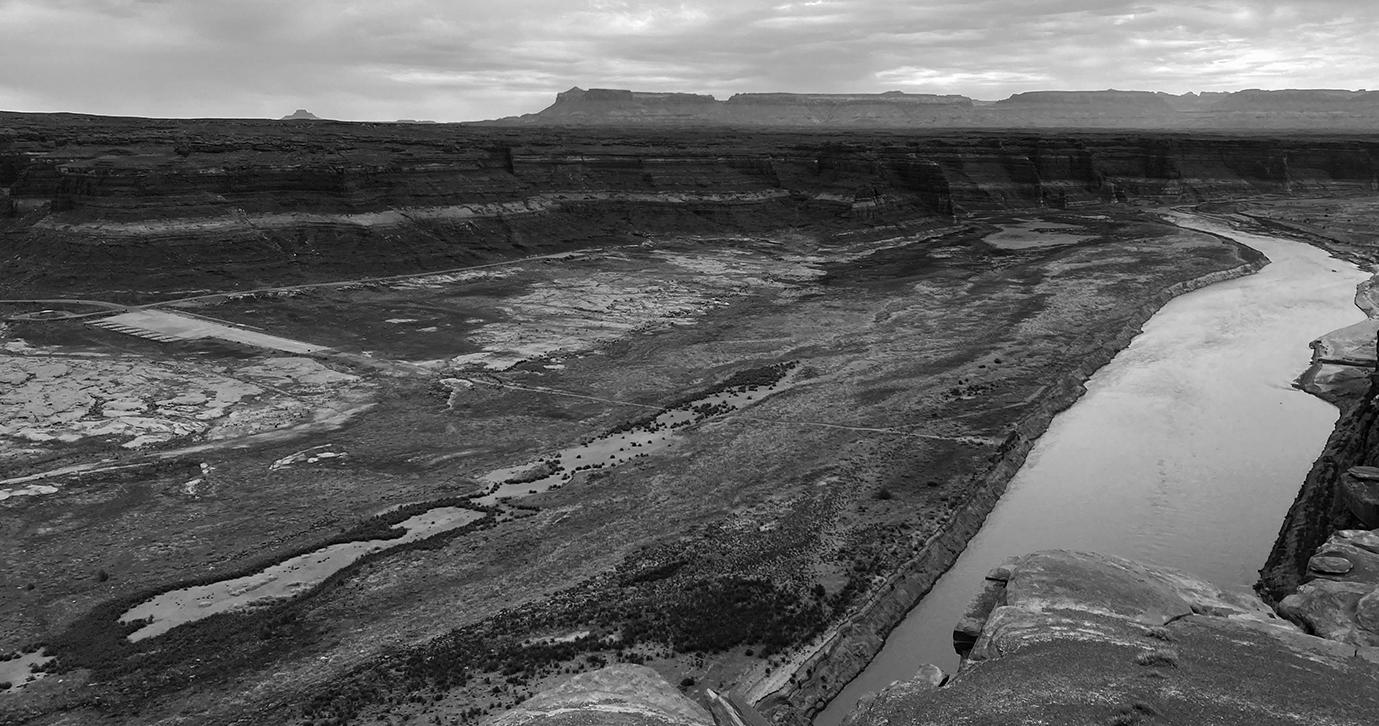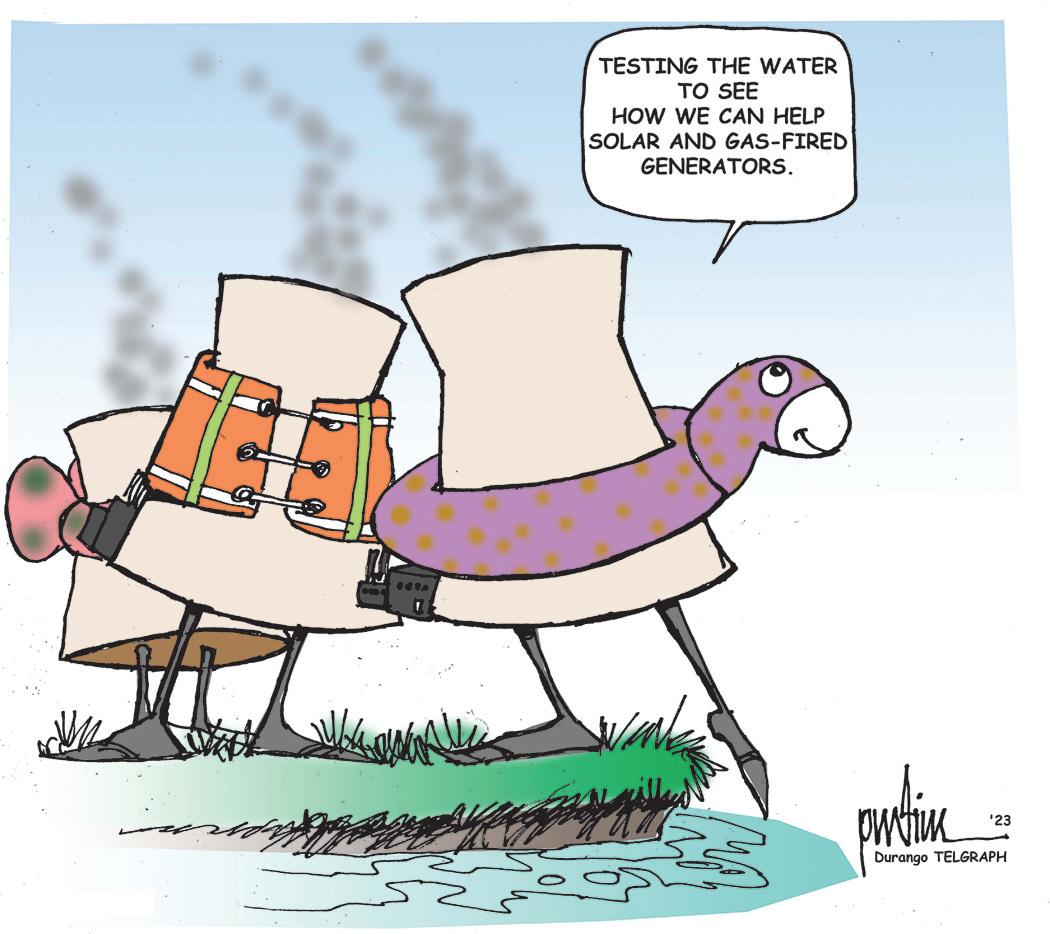
4 minute read
Breaking down the ‘breakthrough’
Colorado River deal is big news, but is it enough?
by Jonathan P. Thompson
Advertisement
The News: Arizona, California and Nevada have come up with a landmark agreement to slash their consumption of Colorado River water by 3 million acre-feet in coming years. The Colorado River and its reservoirs are saved!
The Buzzkill: Nope. Not quite.
Yes, the three Lower Basin states came up with an agreement to cut water use substantially. Yes, it’s a breakthrough (as any such agreement would be). But no, it won’t be enough to save the Colorado River if the climatic conditions of the past couple decades persist or worsen. Plus, the proposed cuts are only for the next few years. What then?
The Background: For those who may have forgotten, the 1922 Colorado River Compact divvied up the river between the Upper and Lower Basin states (Mexico was included in the 1940s). The problem: The 16.5 million acre-feet pie they parceled out was bigger than what actually existed – even back then. They assumed the river carried about 20 million acre-feet each year. In fact, it was more like 14 million acre-feet, so they were already in debt to reality when the Compact was signed. Oof.
In the decades since, the population of all of the states burgeoned, and water consumption also increased. Meanwhile, after the wet and wild 1980s, longterm drought and warmer temperatures diminished the river and the reservoirs that were supposed to carry users over during dry years. Last summer, it looked like Lake Powell might drop below the minimum power pool, or the level needed to allow water to flow through the hydroelectricity-generating turbines, within a couple of years. Losing hydropower is one thing, but losing the ability to release water through the penstocks is another, with its own dire ramifications
That prompted federal water officials to call on the states to cut consumption by 2 million to 4 million acrefeet per year, or else they would implement the cuts themselves. The states blew past deadlines without an agreement until finally, last month, the Bureau of Reclamation presented two alternatives:
Cut Lower Basin use according to the concept of priority (meaning Arizona would take the biggest cuts); or,
Cut a flat percentage of each state’s water use (meaning California would take the biggest cuts).
The prospect apparently was enough to scare the bejeezus out of the states, pushing them back to the negotiating table where they came up with this week’s deal.
Details so far are sketchy, but here’s what we know:
The Agreement: The Lower Basin states together will cut consumption by 3 million acre-feet from 202326, with at least 1.5 million acre-feet in cuts coming by the end of 2024 (there is no indication of how these cuts will be distributed across the states, but the Washington Post reports California will bear about half the cuts).
Up to 2.3 million acre-feet of those cuts will be federally compensated by about $1.2 billion in Inflation Reduction Act funds. Most likely this means that farmers will be paid not to irrigate their crops.
So what’s wrong with this deal? I’ll admit that when I first read the stories on this, I was pretty damned impressed: 3 million acre-feet is good! Thing is, all those cuts are spread out over three years, meaning it’s only about 1 million acre-feet per year. That’s only half the minimum amount of cuts the feds say are needed to shore up the river system and its reservoirs. It just won’t cut it, so to speak, if the drying trend continues.
Furthermore, the deal clearly is meant only to be temporary – a stopgap, a band-aid – that runs out in three years. What happens then? Even if the agreement were to be extended, where would the billions of dollars come from to keep paying the farmers not to irrigate? What if the Republicans’ obstructive ways nix the payments? And what about the additional 700,000 acre-feet of cuts promised? Where will they come from? Or will that require a whole new round of negotiations?
I don’t want to be a party pooper. It’s great that the states came to an agreement and, yes, it is a solution, of sorts. But it’s not the sustainable one that’s necessary. But who knows? Maybe this past wet winter and huge runoff isn’t an anomaly. Maybe it’s the new normal and big rains and snows will come regularly over the next 20 years, filling up the reservoirs, saturating the soil, and swelling the Colorado River into the muddy monster of yore. Maybe we won’t need these cuts after all. But I sure as heck wouldn’t bank on it.
Get the Party Started!

Expertise matters

La Plata Electric Association, our local electric cooperative, is an excellently run organization and recognized as a leading co-op nationwide. Over the past few years, under the present board leadership, it lowered electricity costs for us members, established greenhouse gas emission goals, and updated infrastructure and policies, all while working on a 50% buy-out from our costly 50-year Tri-State contract.
This year, District 4 residents (the northeast part of La Plata County) have the opportunity to be represented by David Luschen on the LPEA Board. Luschen has 26 years of experience starting as a front-line engineer and working his way up to management for the nation’s largest municipally owned utility. Electing Luschen brings along valuable experience benefiting us co-op members, while strengthening LPEA’s already outstanding organization.
Forget the all of the divisive and negative comments made about LPEA by his opponent. Please vote for Luschen, the experienced candidate!
– Werner Heiber, Durango
United we stand
As we approach July 4, we may wish to read and reflect on the Declaration of Independence.
We are free to pursue happiness. It’s not guaranteed. Our joy (and displeasure) is our responsibility.
While we’re at it, we may wish to reflect on the energy we put forth in our civic engagement. Open minds and hearts matter. It is not patriotic to be sucked into the distortion of “us” and “them” as this plants the seeds of division and dissent.

Almost every war throughout the millennia has had neighbors fighting neighbors. Such events begin behind the scenes by those rare few whose economic interests are at risk.
Distraction and disinformation manipulates good people. We have more in common than our political affiliations.
It’s worthwhile to look no further than within, so we find the humility and gratitude that binds us.
– Carl Sheeler, Durango





